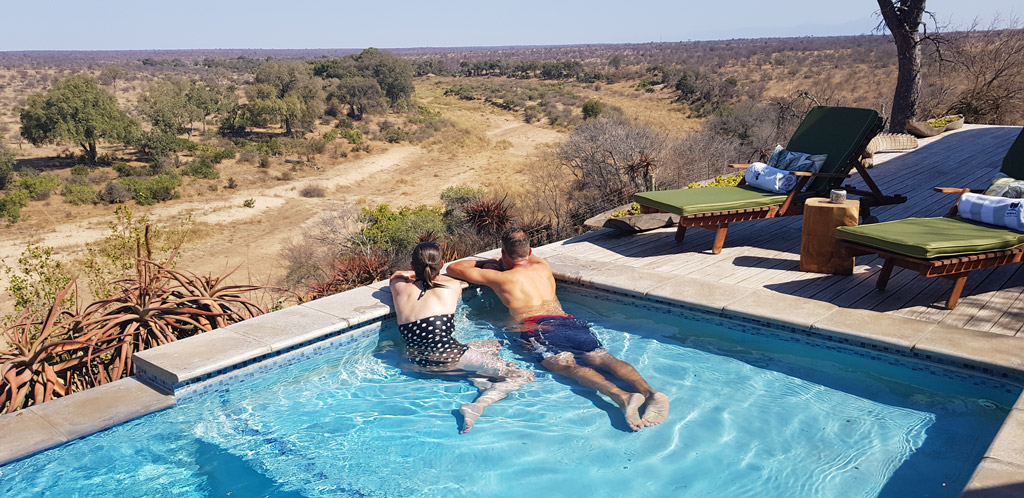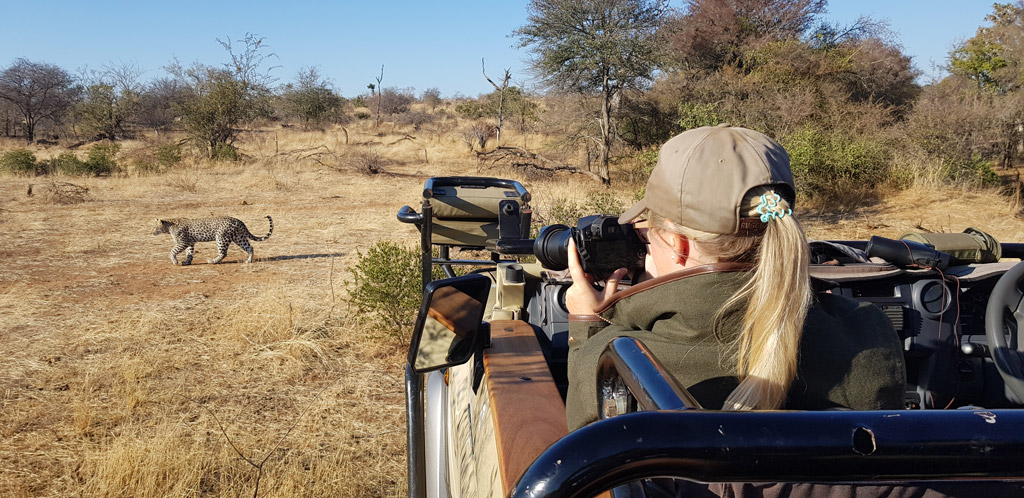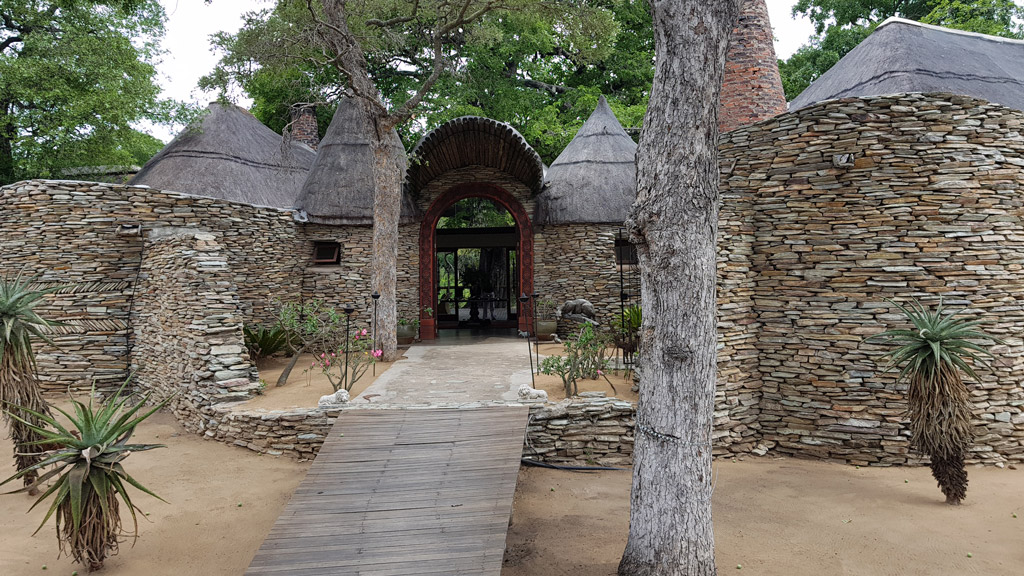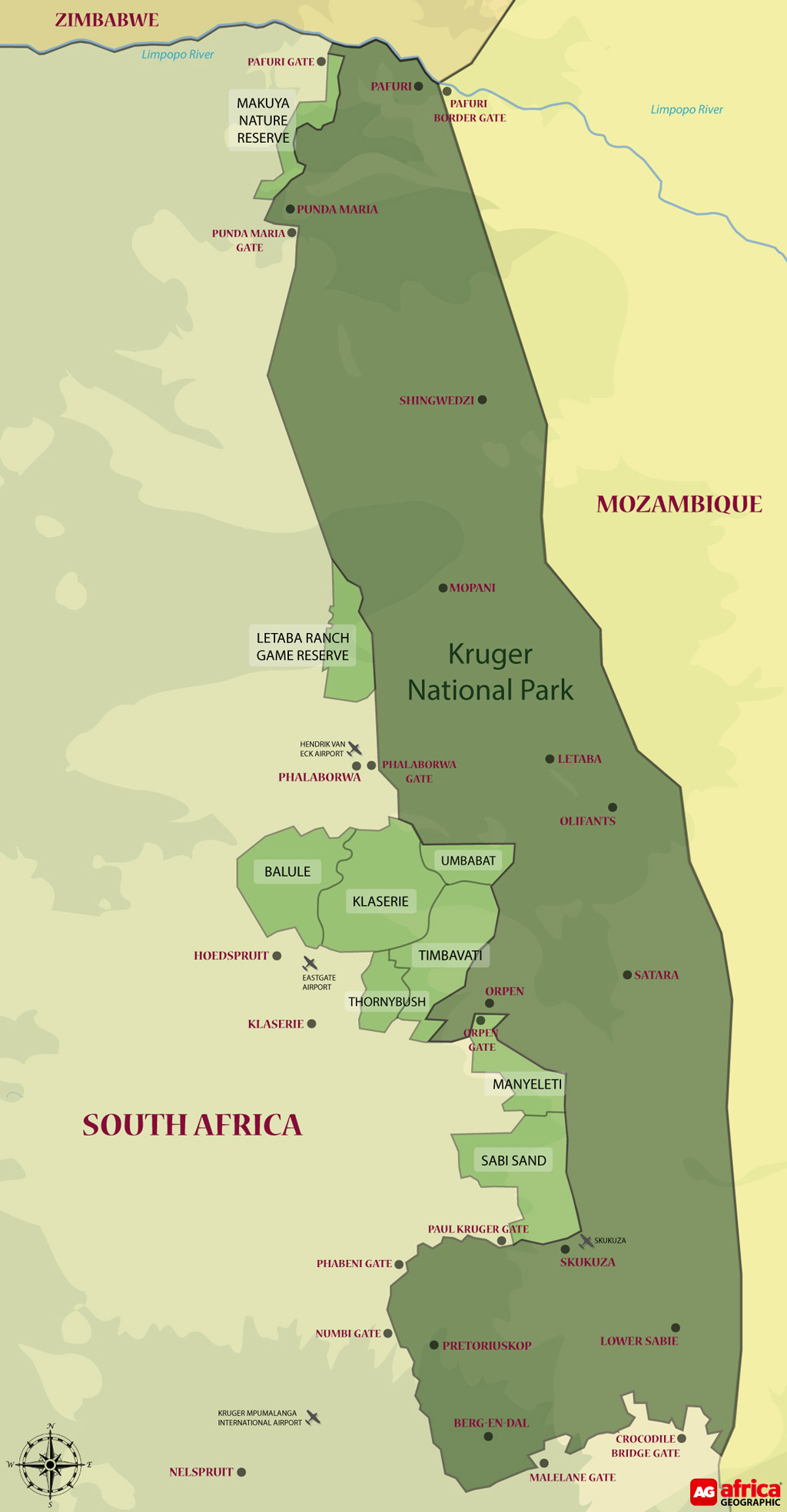
The Kruger National Park has attained international renown, but the terms ‘Kruger National Park’ (KNP) and ‘Greater Kruger’ are often used interchangeably, despite their differences. The distinction between the two is important, to understand both the tourist experience and how this conservation model has impacted the wildlife of the area.
 Find out about Greater Kruger or Kruger National Park for your next African safari. We have ready-made safaris to choose from, or ask us to build one just for you.
Find out about Greater Kruger or Kruger National Park for your next African safari. We have ready-made safaris to choose from, or ask us to build one just for you.
The ‘Greater Kruger’ refers to protected land to the west of Kruger National Park that provides a more substantial area for wildlife to roam freely. Private and local community property owners own this additional land, and most is utilised for commercial purposes.
There are no longer fences between these properties and KNP, providing the animals with an opportunity to roam, thereby reducing pressure on vegetation and bringing back historical local seasonal wildlife movements. Historically most seasonal migration was in an east-west direction, from the coastal areas of Mozambique to the slopes of the Drakensberg mountains, to take advantage of seasonal food and water. Fences and human pressure now prohibit that movement, and the north-south shape of KNP is not optimal for seasonal migrations.

Luxury safaris
The Greater Kruger is utilised primarily for photographic tourism and is home to some of South Africa’s best-known luxury Big 5 lodges. Relatively high prices and strict access control results in low visitor numbers compared to the neighbouring KNP, and off-road driving (by experienced guides), night drives and bush walks guarantee fantastic wildlife encounters.

Wildlife industry
South Africa’s conservation strategy incorporates other wildlife industries such as hunting; a strategy that has resulted in large areas outside of national parks falling under some form of protection against livestock and crop farming and other forms of development not tolerant of wildlife. A small portion of the hundreds of landowners making up the Greater Kruger permit trophy hunting on their (non-tourism) properties, to fund their significant and increasing anti-poaching and other conservation costs. The limited trophy hunting quotas are subject to approval by the KNP, and hunting protocol strictly enforced by the management of the constituent reserves. That said, immoral or illegal behaviour by members of the trophy hunting industry does occur. Trophy hunting in most constituent reserves within Greater Kruger is gradually being squeezed out by the resurgent photographic tourism industry, and no trophy hunting is permitted in the KNP itself.
Properties making up the Greater Kruger
Sabi Sand Nature Reserve, MalaMala & Sabi Sand Game Reserve
The 65,000 ha Sabi Sand Reserve shares a 50km unfenced boundary with the Kruger National Park. When the Kruger National Park was declared in 1926, the landowners of the original Sabi Game Reserve were excised and had to settle for land outside of the national park. In 1948, 14 of these conservation-minded landowners met at Mala Mala and decided to join forces and create the first-ever private nature reserve in South Africa. The eastern fence of the reserve, bordering the Kruger National Park, was removed in 1993, making the Sabi Sand Reserve part of the Greater Kruger. The land is used for photographic tourism and private leisure. For your ready-made African safari to Sabi Sand Game Reserve, click here.

The Associated Private Nature Reserves (APNR)
The APNR is an association of privately owned reserves that removed fences bordering the Kruger National Park in 1993 after operating before that as livestock and hunting farms. The reserves (which in turn are made up of multiple smaller properties) included in the APNR are Timbavati Private Nature Reserve (53,396 ha), Klaserie Private Nature Reserve (60,080 ha), Umbabat Private Nature Reserve (18,000 ha), Balule Private Nature Reserve (55,000 ha) and Thornybush Game Reserve (14,000 ha). Land use varies from private leisure use to photographic tourism and trophy hunting on some properties.
Manyeleti Game Reserve
Founded in 1963, the 23,000 ha Manyeleti Game Reserve is sandwiched between the KNP, Sabi Sand and Timbavati, with no fences in-between. It also has an interesting and unique history. During the Apartheid years, it was the only reserve that welcomed people of colour, and after claiming back the land, the local Mnisi people now own and manage the reserve. Land use is exclusively for photographic tourism.
Letaba Ranch
The 42,000 ha Letaba Ranch Game Reserve, just north of the mining town of Phalaborwa, shares an unfenced border with the Kruger National Park. The reserve is owned by the local Mthimkhulu community and has historically been used mainly for trophy hunting. Future plans include hunting and eco-tourism, but current operations appear to be in a state of turmoil.
Makuya Nature Reserve
Makuya Nature Reserve is a 16,000 ha game reserve near the Pafuri gate in the far north of the Kruger, and also shares an unfenced border with the Kruger National Park. The reserve is owned by the Makuya, Mutele, and Mphaphuli communities and is used for both trophy hunting and limited photographic tourism purposes.


Despite ongoing challenges, the Greater Kruger is one of conservation’s greatest success stories and is the model underpinning KNP’s 10-year management plan. It is also the perfect safari destination for those looking for exclusive encounters with Africa’s Big 5.
Further reading: The History and Future of Kruger
To comment on this story: Login (or sign up) to our app here - it's a troll-free safe place 🙂.![]()






